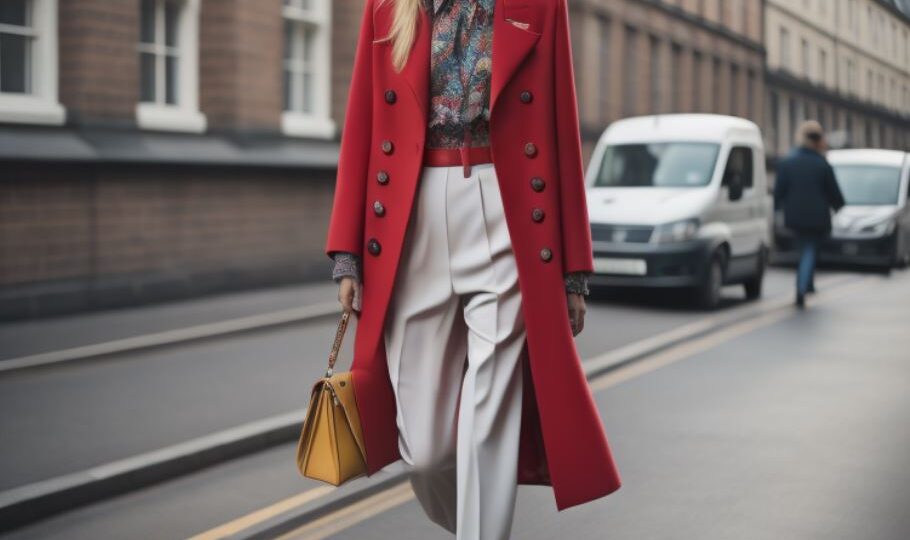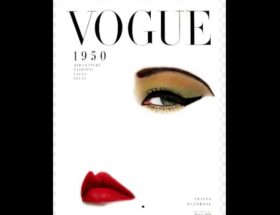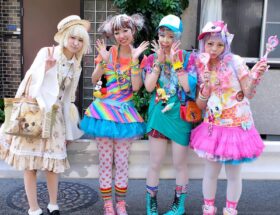Fashion has long been a reflection of individuality and cultural expression. While high fashion runways dictate the latest trends, it’s on the streets that these trends truly come to life. In the United Kingdom, a vibrant and diverse street style scene has thrived for decades. This article delves into the world of British street style, exploring how people in the UK interpret and adapt runway trends to create their distinctive daily wardrobes.
The Origins of Street Style
Street style as we know it today originated from the streets of cities like London, where subcultures and youth movements have consistently influenced fashion. In the 1960s, Carnaby Street in London’s Soho district became synonymous with mod fashion, characterized by sharp tailoring, bold prints, and a sense of rebellion. This era laid the groundwork for the thriving street style scene that continues to evolve.
The punk movement of the 1970s, led by icons like Vivienne Westwood, injected anarchy and rebellion into fashion. Safety pins, leather jackets, and DIY aesthetics became symbols of punk style, demonstrating the transformative power of street fashion.
Runway to Real Life: Adapting High Fashion
One of the most fascinating aspects of street style is its ability to transform haute couture into wearable, everyday fashion. Runway trends, often characterized by their avant-garde and theatrical nature, undergo a metamorphosis when they hit the streets.
1. Tailoring and Power Dressing
British fashion has a rich history of tailoring, and this influence can be seen in street style. Power dressing, a trend that emerged in the 1980s with sharp suits and shoulder pads, continues to inspire those who want to exude confidence and authority in their daily lives. Tailored blazers, oversized blouses, and structured trousers are staples of this style, blending professionalism with fashion-forward flair.
2. Vintage Revival
The love for vintage clothing has been a constant in British street style. From thrift stores to specialized vintage boutiques, fashion enthusiasts have been rediscovering and incorporating pieces from bygone eras into their modern wardrobes. Vintage denim, oversized leather jackets, and retro prints are all hallmarks of this trend.
3. Gender-Fluid Fashion
The UK has been at the forefront of the gender-fluid fashion movement, challenging traditional notions of clothing and identity. Runway designers like J.W. Anderson and Stella McCartney have embraced gender-neutral collections, inspiring a generation of fashion enthusiasts to explore androgynous looks. Street style in the UK often features individuals pushing boundaries with genderless clothing, from oversized silhouettes to bold accessories.
4. Eclectic Mix-and-Match
British street style is known for its fearless mix-and-match approach. It’s a place where contrasting patterns, textures, and styles collide in harmonious chaos. This trend draws inspiration from the maximalist tendencies of designers like Gucci and Dolce & Gabbana, who have championed the art of excess. Londoners, in particular, excel at crafting outfits that are both visually captivating and deeply personal.
London: The Epicenter of Street Style
When it comes to UK street style, London undoubtedly takes center stage. The city’s diverse and multicultural population contributes to a rich tapestry of fashion influences. It’s during London Fashion Week that the city truly shines as a global fashion hub.
1. Street Style at Fashion Week
London Fashion Week is not just about the runway; it’s also a showcase of the city’s unrivaled street style. Fashionistas, influencers, and photographers gather outside show venues, capturing the eclectic and ever-evolving looks that grace the sidewalks. Street style photographers like Tommy Ton and Scott Schuman have documented these moments, elevating street fashion to a global stage.
2. The East London Edge
East London, particularly Shoreditch, has become synonymous with edgy, alternative fashion. This neighborhood is a breeding ground for independent boutiques, vintage shops, and experimental designers. It’s where the unconventional meets the avant-garde, resulting in outfits that defy categorization. The streets of Shoreditch are an ever-changing canvas of self-expression, with street art and graffiti often complementing the vibrant fashion scene.
Influencers and Social Media
The digital age has democratized fashion, allowing anyone with a smartphone to become a style influencer. UK-based fashion influencers and bloggers have played a significant role in shaping street style trends. They provide a platform for self-expression and have the power to introduce niche and emerging designers to a wider audience.
1. Sustainable Street Style
Sustainability is a growing concern in the fashion industry, and UK influencers have been at the forefront of promoting eco-friendly choices. They showcase sustainable and ethical fashion brands, encouraging their followers to make more conscious wardrobe choices. Thrifting and upcycling, too, have become integral components of sustainable street style.
2. Cultural Fusion
The UK’s multicultural fabric is reflected in its street style. Influencers from diverse backgrounds infuse their cultural heritage into their fashion choices, resulting in stunning fusion outfits. This cross-cultural exchange celebrates diversity and encourages fashion enthusiasts to embrace and appreciate different traditions and aesthetics.
Street Style and Social Change
Street style isn’t just about fashion; it’s a reflection of society and culture. The streets have often been platforms for social change, and fashion is no exception. Street style can be a powerful tool for challenging norms and advocating for important causes.
1. Gender Equality
Gender equality has been a recurring theme in street style, with fashion enthusiasts using their clothing choices to challenge gender stereotypes. Gender-neutral clothing, androgynous styling, and support for LGBTQ+ rights are all prominent aspects of this movement.
2. Anti-Fast Fashion
The fast fashion industry has come under scrutiny for its environmental and ethical impact. Street style influencers have been vocal about the need for sustainable fashion choices, emphasizing quality over quantity and encouraging consumers to invest in timeless, well-made pieces.
Conclusion
British street style is a testament to the creativity, diversity, and cultural vibrancy of the United Kingdom. It’s a living, breathing art form where runway trends are adapted, personalized, and made relevant to the everyday lives of fashion enthusiasts. From London’s eclectic mix-and-match to East London’s avant-garde edge, street style continues to be a dynamic force in shaping the fashion landscape. As the world becomes more interconnected, British street style will undoubtedly remain an influential and evolving cultural phenomenon.









